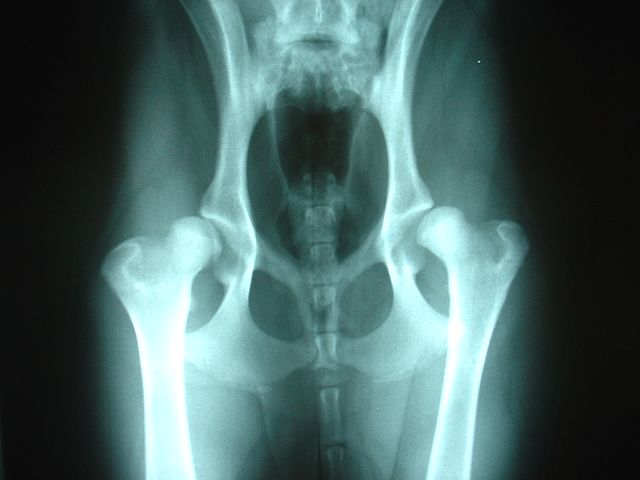In dogs, hip dysplasia is an abnormal formation of the hip socket that, in its more severe form, can eventually cause lameness and arthritis of the joints. It is a genetic (polygenic) trait that is affected by environmental factors. It is common in many dog breeds, particularly the larger breeds, and is the most common single cause of arthritis of the hips.
Hip dysplasia in a Labrador Retriever
Normal hips, for comparison
A Labrador Retriever standing with hind legs close together to compensate for hip dysplasia
Atrophy of thigh muscle after a two-year evolution of hip dysplasia
Neutering, from the Latin neuter, is the removal of a non-human animal's reproductive organ, either all of it or a considerably large part. The male-specific term is castration, while spaying is usually reserved for female animals. Colloquially, both terms are often referred to as fixing. In male horses, castrating is referred to as gelding. An animal that has not been neutered is sometimes referred to as entire or intact.
Feline uterus
Closed spaying incision on a female dog, taken 24 hours after surgery
Surgical incision site of a female cat
Closed castration incision on a male dog, taken 12 hours after surgery








